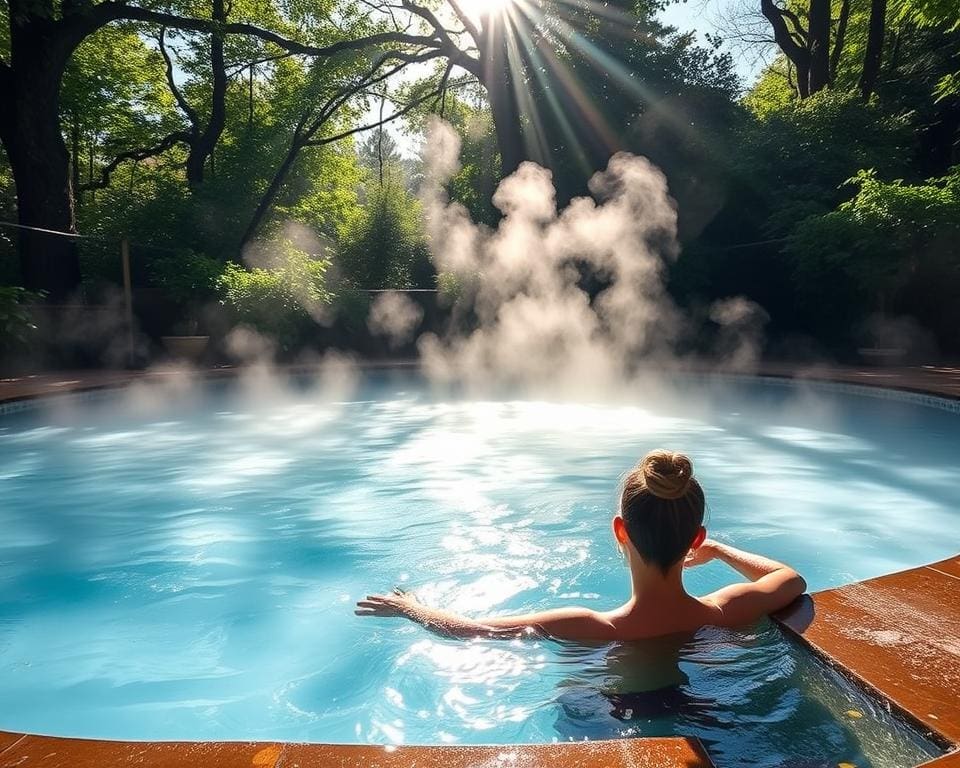For athletes and fitness enthusiasts, the decision of whether to engage in a cold plunge before or after your workout is crucial. Cold plunge therapy has become increasingly recognized for its remarkable benefits of cold plunge immersion, particularly in enhancing recovery and athletic performance. By immersing the body in cold water, typically between 50°F and 59°F, individuals can experience reduced muscle soreness, inflammation, and faster recovery times.
This practice is not just a trend; it’s supported by scientific research that underscores how effective cold plunges can be in helping athletes return to peak performance more quickly. By understanding the mechanisms and timing, you can leverage cold plunge for recovery effectively, making it an integral part of your fitness regimen.
The Science Behind Cold Plunge Therapy
Understanding the scientific principles behind cold plunge therapy reveals why it has become a preferred method for athletes and fitness enthusiasts aiming to enhance their recovery. The process of immersing oneself in cold water offers remarkable benefits that extend beyond mere refreshment.
How Cold Water Affects Muscle Recovery
Cold plunge therapy effectively influences muscle recovery by constricting blood vessels. This constriction reduces blood flow to the muscles, minimizing inflammation and swelling, particularly after intense workouts. Research highlights that athletes utilizing cold plunge for recovery experience significantly lower levels of biomarkers indicating muscle damage. This illustrates the capacity of cold plunges to optimize the recovery timeline and prepare muscles for subsequent training sessions.
Physiological Benefits of Cold Exposure
The physiological effects of cold exposure extend to the enhancement of thermoregulation and metabolic functions. Engaging in a cold plunge not only aids in reducing muscle soreness but also elevates mood by triggering the release of endorphins. This powerful combination fosters mental clarity and increased focus, vital attributes for athletes seeking peak performance. The diverse cold plunge benefits underscore its value in integrating recovery into a comprehensive fitness regimen.

Cold Plunge Before or After Your Workout: What to Consider
Choosing the right moment for a cold plunge can significantly enhance your workout experience. Determining when to take a cold plunge involves understanding its effects both before and after physical activity. The timing can influence performance, recovery, and overall training effectiveness.
Impact on Pre-Workout Performance
Taking a cold plunge before exercises presents mixed outcomes. Some individuals find that a brief session in cold water sharpens their focus and mental preparation. They enjoy a heightened sense of alertness, ultimately leading to improved performance. On the other hand, plunging into cold water may induce temporary muscle stiffness, which could hinder agility or strength during crucial movements. Therefore, it is essential to weigh the benefits and drawbacks when considering the best time for a cold plunge.
Benefits of Cold Plunge Post-Workout
The advantages of a cold plunge post-workout are well-documented and widely endorsed among athletes. Engaging in cold plunge therapy after exercising fosters quicker recovery, less muscle soreness, and enhanced overall well-being. Many fitness enthusiasts testify to the effectiveness of cold plunge post-workout, noting that it allows them to return to training sooner and maintain a consistent routine. Incorporating this practice can prove vital for those eager to maximize their performance and minimize downtime.
Timing Your Cold Plunge: Best Practices
To make the most out of cold plunge therapy, understanding the timing and application is essential. Implementing best practices for cold plunge routines can significantly enhance recovery and boost performance. Finding the ideal duration and temperature is crucial for both novice and experienced athletes aiming for optimal muscle recovery.
Recommended Duration for Maximum Benefits
When utilizing cold plunge therapy, experts suggest maintaining an immersion duration of about 10 to 15 minutes. This timeframe has been shown to provide substantial benefits, such as minimizing muscle soreness and improving recovery. Spending too little time may not allow the body to fully reap the effects, while lingering in cold water too long could increase the risk of hypothermia. Therefore, sticking to this recommended duration is key in maximizing the therapy’s advantages.
Temperature Guidelines for Effective Cold Plunges
The temperature of the water is another vital aspect to consider during your cold plunge. Ideally, the water should be between 50°F and 59°F to effectively facilitate recovery and reduce muscle soreness. Adhering to these temperature guidelines helps ensure that the body’s response is optimal, providing an invigorating, refreshing experience. By carefully monitoring the timing for a cold plunge and ensuring your immersion meets these standards, you can harness the full potential of this remarkable recovery tool.
Source: Cold plunge before or after workout: does timing matter?









